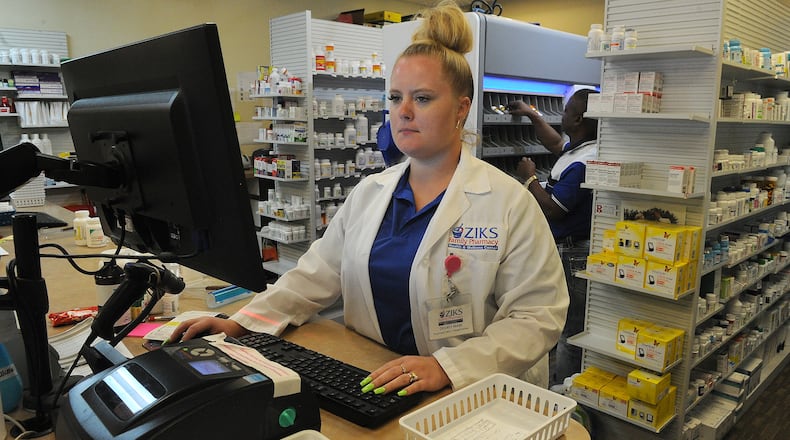“The ultimate goal is to take care of the patients,” said Ziks Pharmacy owner Nnodum Iheme.
Pharmacists like Iheme used to make enough money on filling prescriptions where it could fit with their business model to take time to both fill prescriptions and also share clinical expertise.
However, pharmacist trade groups have said they have the training to provide more care but what they don’t have is the time — at least not with how they are currently paid.
“Twenty years ago, you could make a living dispensing prescriptions. You get to talk to a mom about her diabetes. You can’t do that now you’re running on the treadmill as fast as you can,” said Scott Knoer, CEO of the American Pharmacists Association.
What Ohio did in 2019 to change this was pass a law to give pharmacists “provider status.” Now under Medicaid, pharmacists have the status to bill for more services besides prescription filling.
Ziks pharmacists with the CareSource pilot have collaborative practice agreements with physicians, nurse practitioners, or physicians.
For example with patients with diabetes, along with dispensing medications, the pharmacists participating in the pilot program can also get paid to provide diabetes education, adjust medications, perform foot checks and blood sugar testing.
Dallas Shackleford, a patient at Ziks, said he previously didn’t know how to regulate his blood sugar with his diabetes, which the pharmacists helped him learn to do. He said Ziks staff calls often to check in and said working with them has been a blessing.
“I appreciate them very much,” Shackleford said.
“This is the potential of pharmacy and this is our future, impacting lives directly,” said Gregory Braylock, pharmacist with Ziks.
The goal was to improve health outcomes and decrease hospitalizations and unnecessary ER visits for patients with chronic diseases.
Early results indicate the model could have success if more widely implemented and CareSource is seeking to expand the program to other states and other pharmacies.
The two pharmacies in the pilot saw 15 patients with diabetes who were provided education and recommendations. About 75% who regularly monitor blood glucose saw a decrease following medication adjustments and about 87% were referred for eye, food or dental exams. About 60% had increased adherence to diabetes meds.
Smoking is a key cause of poor health and costs more than $300 billion annually to the U.S. The pharmacists in the pilot identified nine patients who use tobacco and scheduled patient visits and eight initiated pharmacologic therapy (such as Chantix or nicotine replacement therapy).
CareSource in its report on the future direction of the program said the pilot has shown pharmacists “are beneficial to our healthcare system as providers of services — not just dispensing.”
They also counseled 16 patients identified as having uncontrolled asthma symptoms and in need of help with a care plan. Of 10 patients observed during a follow up analysis, medication adherence improved 25% at baseline to 50% at 6 months.
Provider status could become not just Ohio policy but also federal policy.
Ohio Senator Sherrod Brown joined Sen. Chuck Grassley, R-IA, and Sen. Susan Collins, R-ME, in introducing a bill in April that would allow pharmacists to be paid as a provider to perform more health care services for Medicare patients in medically underserved areas.
There’s also a similar companion bill introduced in the U.S. House of Representatives, which is an indication of wider support of the policy.
Steve Ringel, CareSource Ohio market president, said pharmacists are often missing from the equation. He described the move to integrate them more into providing care as common sense.
“Who was missing from that equation was the person that touches them the most. And that was the pharmacist. And so it was mind boggling to me that people could get a script and that’s all they get,” Ringel said.
About the Author


